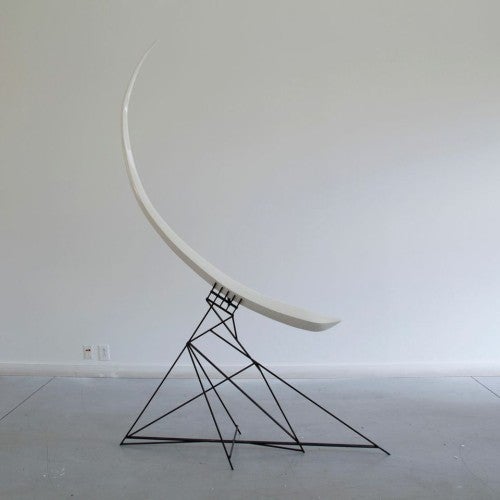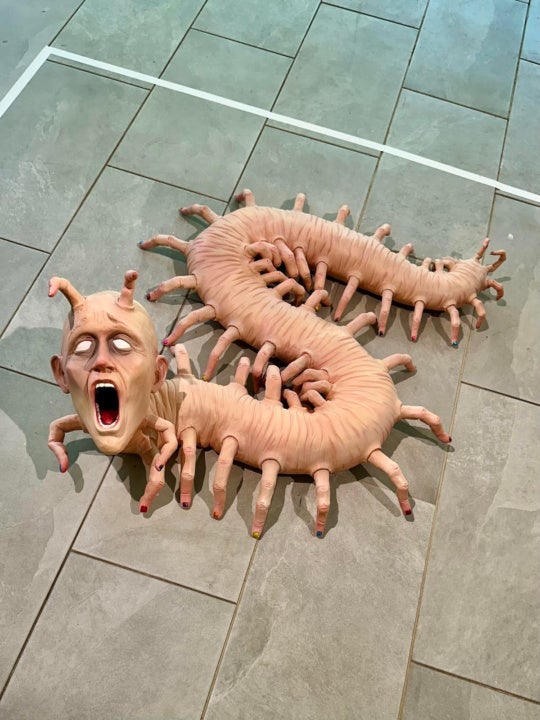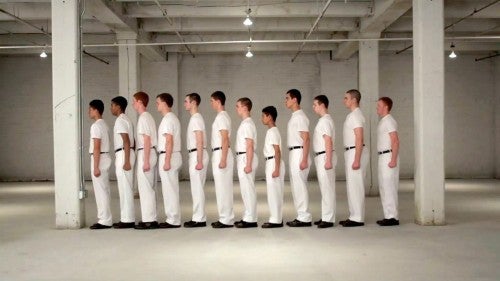
The Hunter Invitational III, at Chattanooga’s Hunter Museum of American Art, presents eight contemporary artists from the surrounding region who all employ process-conscious strategies of art-making to reflect upon their lives and experiences: Jan Chenoweth, Jeffrey Morton, Martha Whittington, Jered Sprecher, Phillip Andrew Lewis, Alicia Henry, Jiha Moon, and Greg Pond. Each artist also works with representation, though in wildly diverse ways.
The transformation of existing imagery is central to the processes of several. Chenoweth collects printed images depicting catastrophes and traumatic events. From them, she develops heavily worked paintings, sanding and reapplying material until the imagery is reduced to resonant geometric forms and physically manipulated surfaces. Morton begins with consistent natural subjects: groves of kudzu. These are painted or drawn with a loose cartographic line, and in the case of the paintings they are layered with subtle color. Rather than looking obsessive, the repetitive forms become Zen-like. Whittington describes a human endeavor through highly formal sculptural language. In Shift Split she portrays a campsite for us, represented through its various pieces of equipment, which have been abstracted to such a degree that we can initially see the work as non-representational.
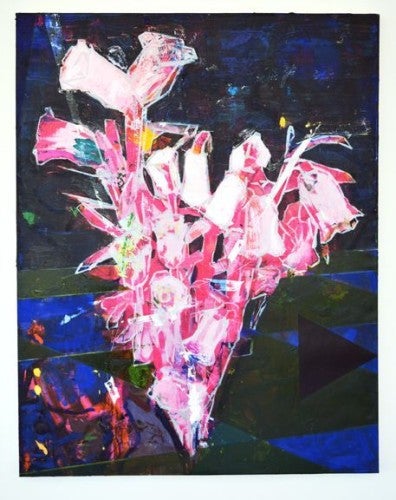
Sprecher’s paintings also employ an image-altering strategy. Sprecher takes found images and simplifies them, using painterly language as a kind of reductive filter. The images that he begins with are often mundane or banal, carrying little in the way of meaning. Direct marks and intense colors are pervasive in his paintings. Calling, for example, involves an image of a bouquet of flowers that has been burned in optically with intense pinks and sharp-edged polyhedrons. In Sprecher’s process the painterly simplification is the content of the work. He prompts us to ask questions about the nature of our recognition and categorization of images.
The figurative depiction is used as an evocative tool in the works of Henry and Lewis. Lewis’s video, Columns depicts teenagers in simple white uniforms marching through a series of cryptic drills. Barked commands from off-screen echo through the gallery. These repeated figures allude to Lewis’s research into the recent history of government-funded experimental drug treatment programs, as well as alluding to his own two-year incarceration in one such program.
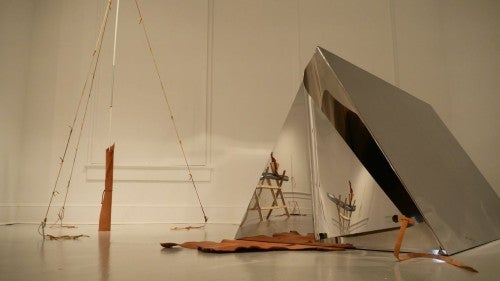
While Lewis’s white-clad figures march on one side of the exhibition space, Henry presents us with a series of textile figures on the other side. These figures are mostly just larger-than-life-size heads with trailing bodies, made of wool, felt, and other fabrics in a palette of blacks, browns, grays, and whites. The simple yet unusual fabrication of these phantom figures is reminiscent of masks, puppets, sewn dolls, and various home crafts. Traditions of the past, personal history, and the history of racist caricatures of African Americans are all simultaneously present in these works, but Henry carefully avoids committing to any one of these categories in a forthright manner.
Popular culture, more specifically transpacific pop culture, is the representational idiom that Moon works within. In her artist statement, she asks, “Why do people like foreign stuff so much?” She plunges into the investigation of this question with reckless consumerist glee. The works are busy and colorful, incorporating painting, drawing, collage, traditional Korean knot-making, and ceramic sculpture. Her execution is sensitive due to the amount of labor and handiwork involved. At times the glee and improvisation in the work starts to feel like hysteria, and one wonders if there is a hidden terror in excess.
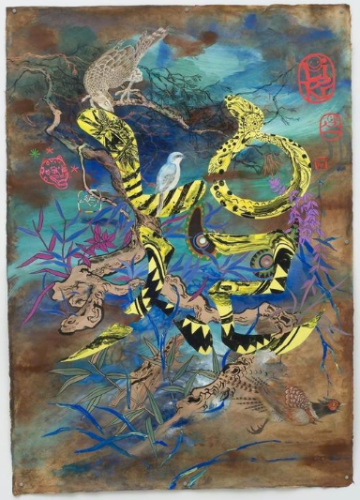
Pond’s representational strategy is culturally referent like Moon’s, but instead of a consumerist utopia Pond draws inspiration from urban dystopias. His precisely fabricated sculptures rely on stark material and formal contrasts. Attenuated linear forms anchor themselves to solid masses. Architectural systems are transposed against chaotic natural forms. These systematic contrasts seem to relate to the phenomena he observes in places such as Trenchtown, Jamaica, or Patten Towers, Chattanooga. He blends technological processes such as audio and digital forming with more analog processes such as wood joining and welding.
Curator Nandini Makrandi Jestice could have envisioned the Hunter Invitational as a traditional regional survey, jurying works from dozens of artists via application. Instead, she focused on selecting a small group through what appears to have been a very laborious vetting process. The result is that eight artists have been gathered together and have been given the latitude to foreground their own idiosyncratic processes and viewpoints. The curator has exercised a light touch, thematically speaking, allowing the work to breathe and speak for itself. We are left with eight very unique approaches to the endeavor of using made things to reflect on our surroundings, our abilities to interpret them, and our definitions of seeing.
The “Hunter Invitational III” is on view at the Hunter Museum of American Art in Chattanooga through October 19.
Orion Wertz is a painter and graphic novelist living in Columbus, Georgia. He is a professor at Columbus State University, where he teaches drawing and painting.
